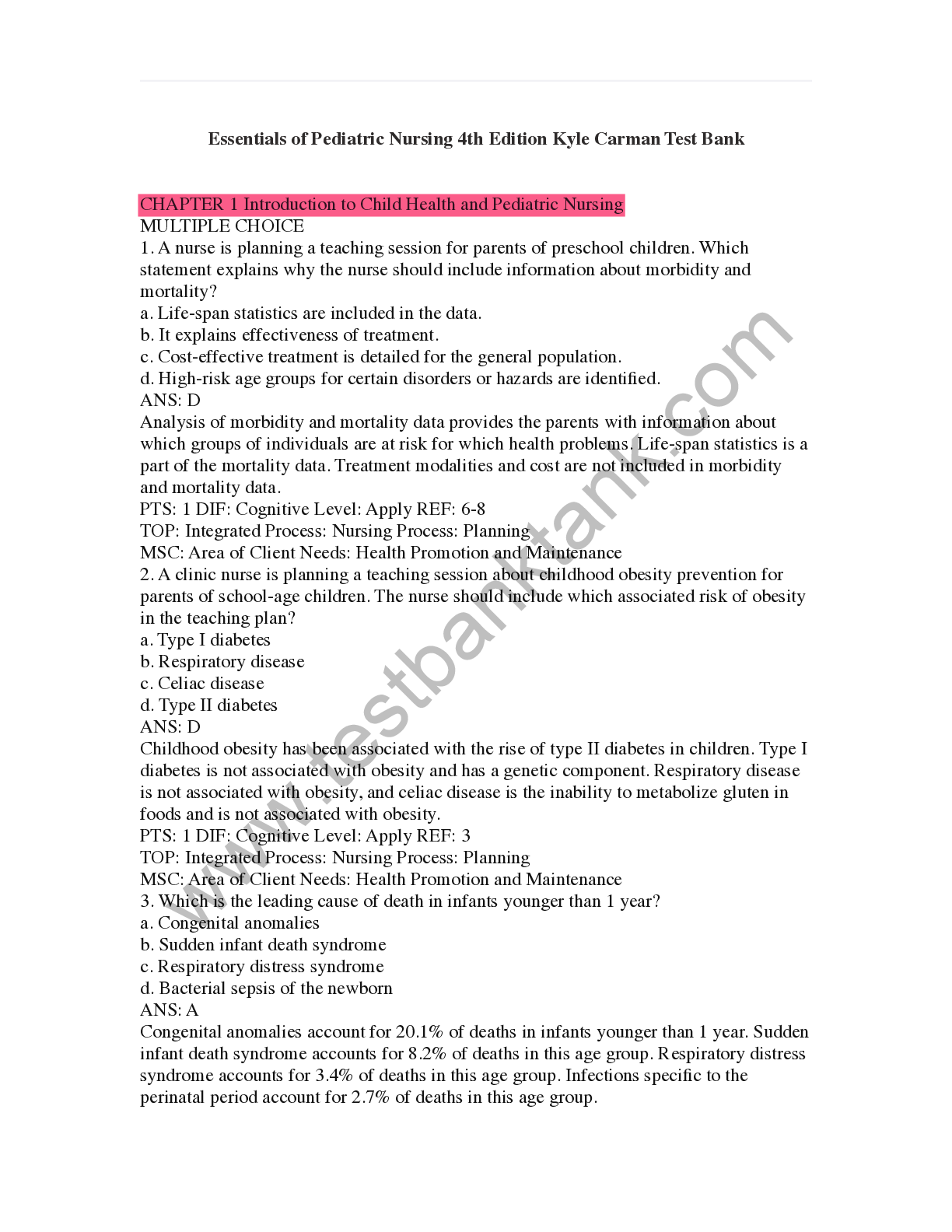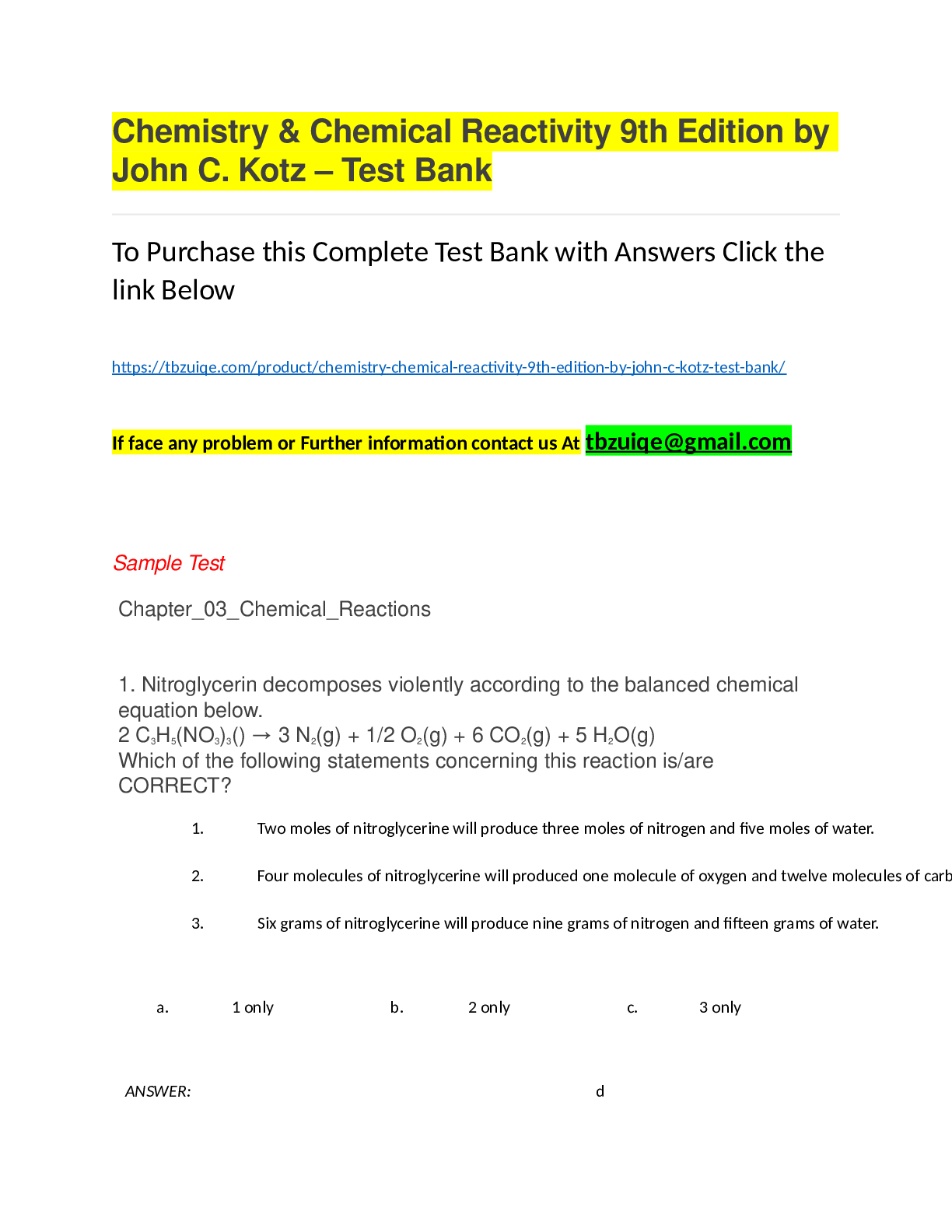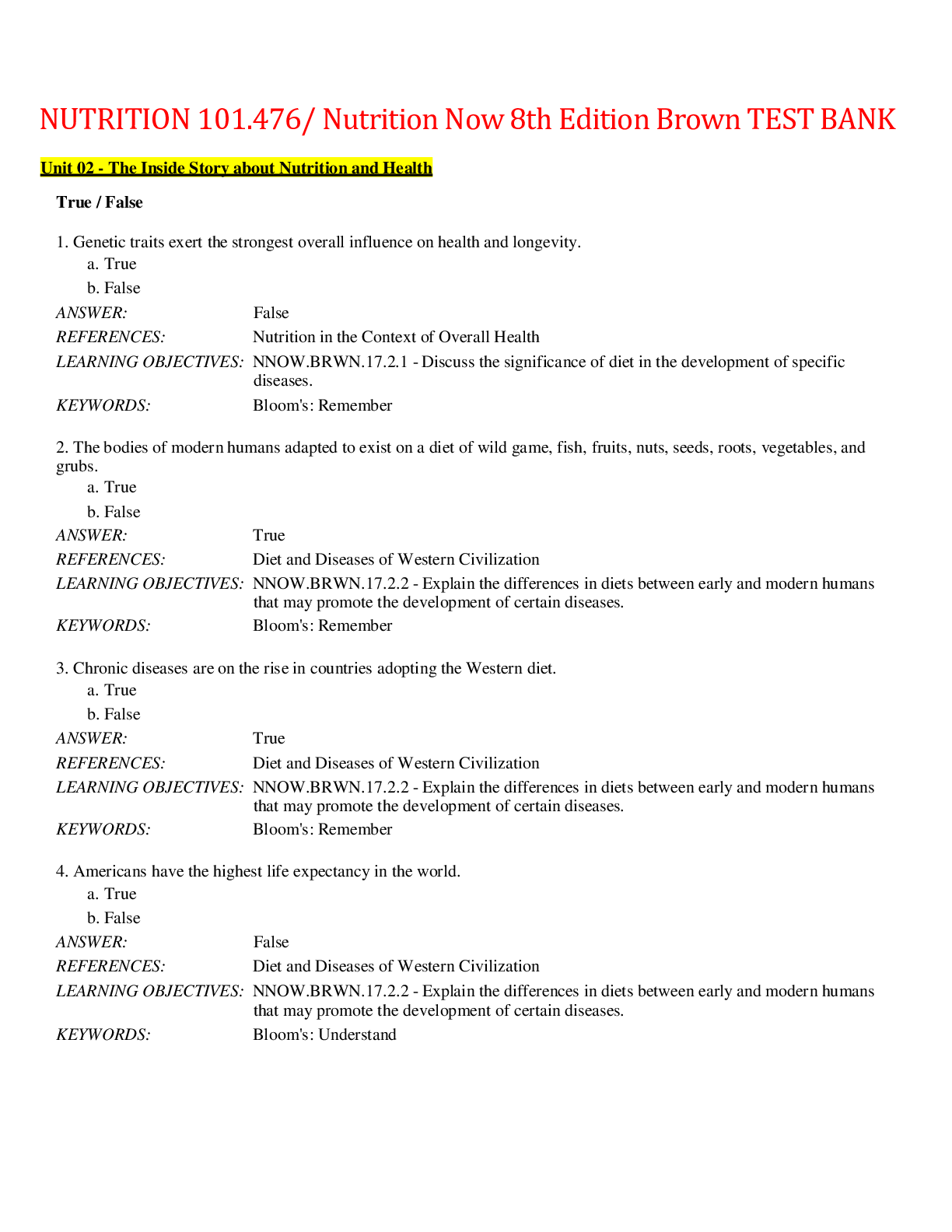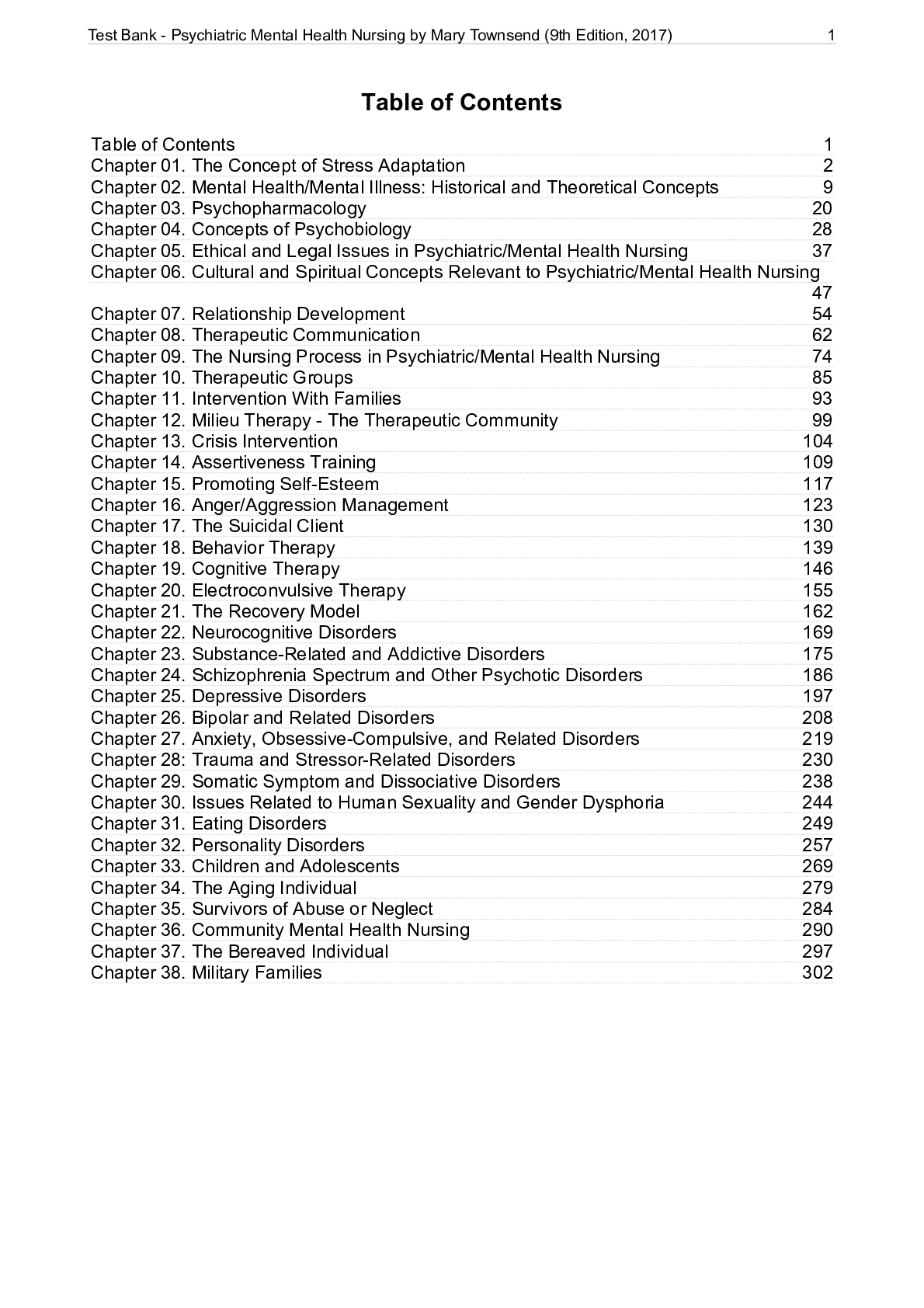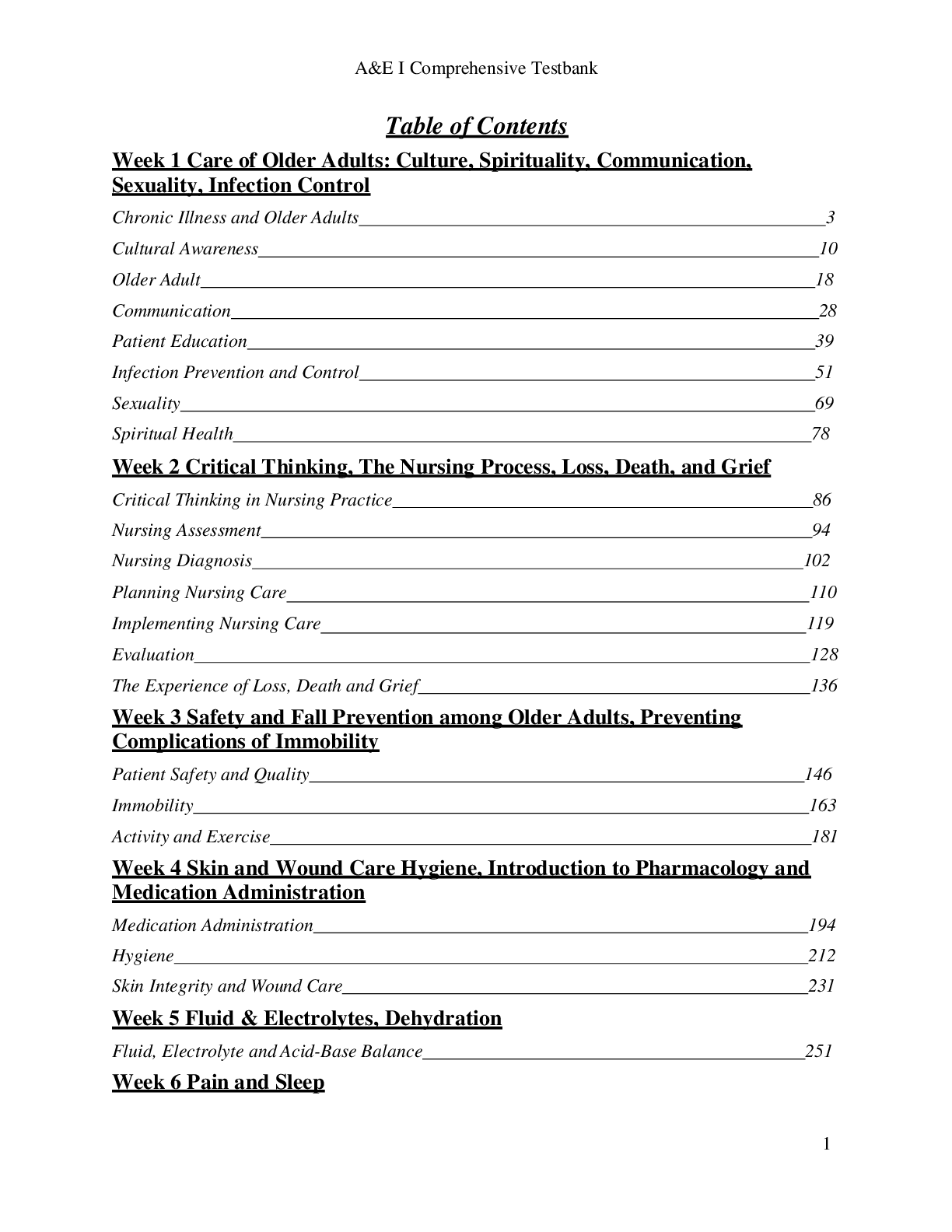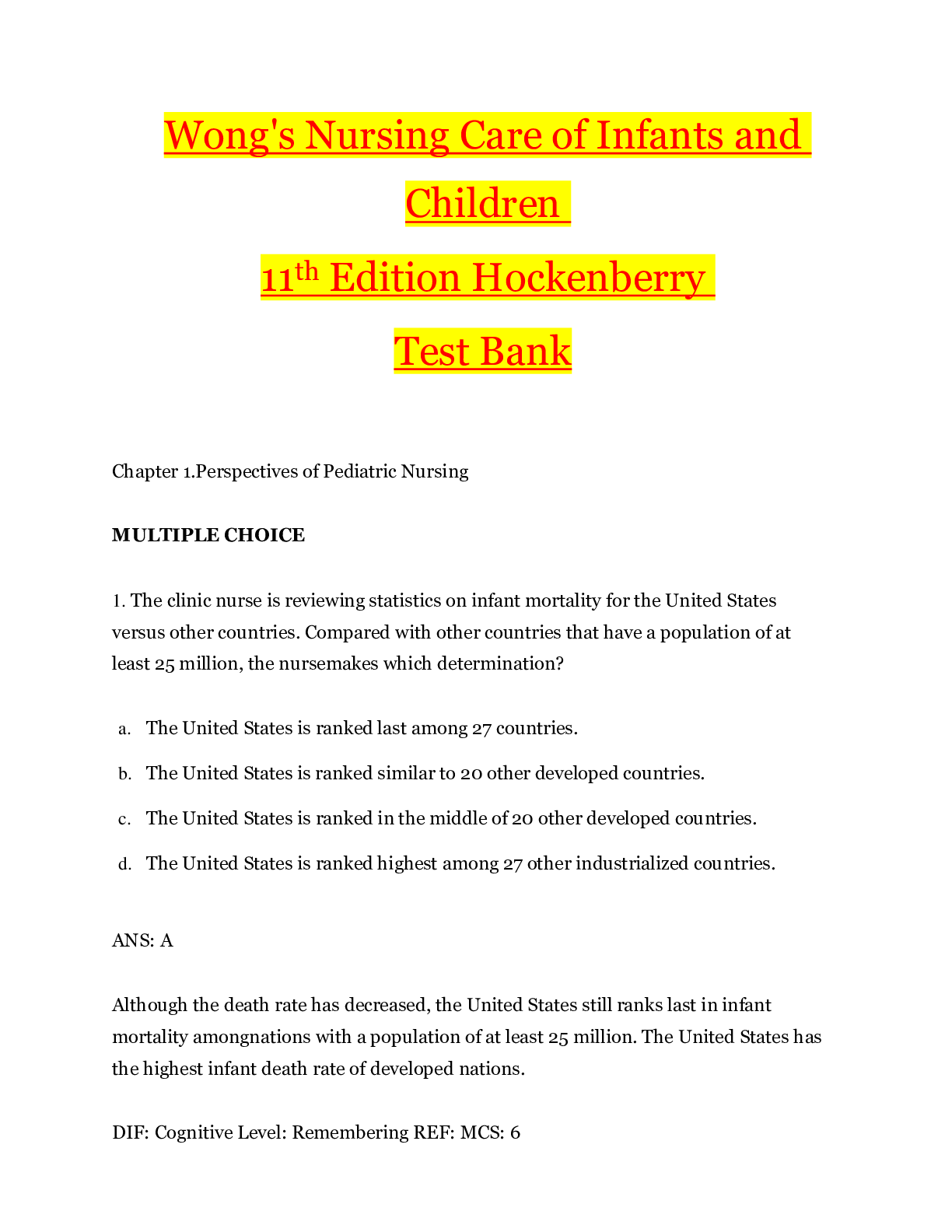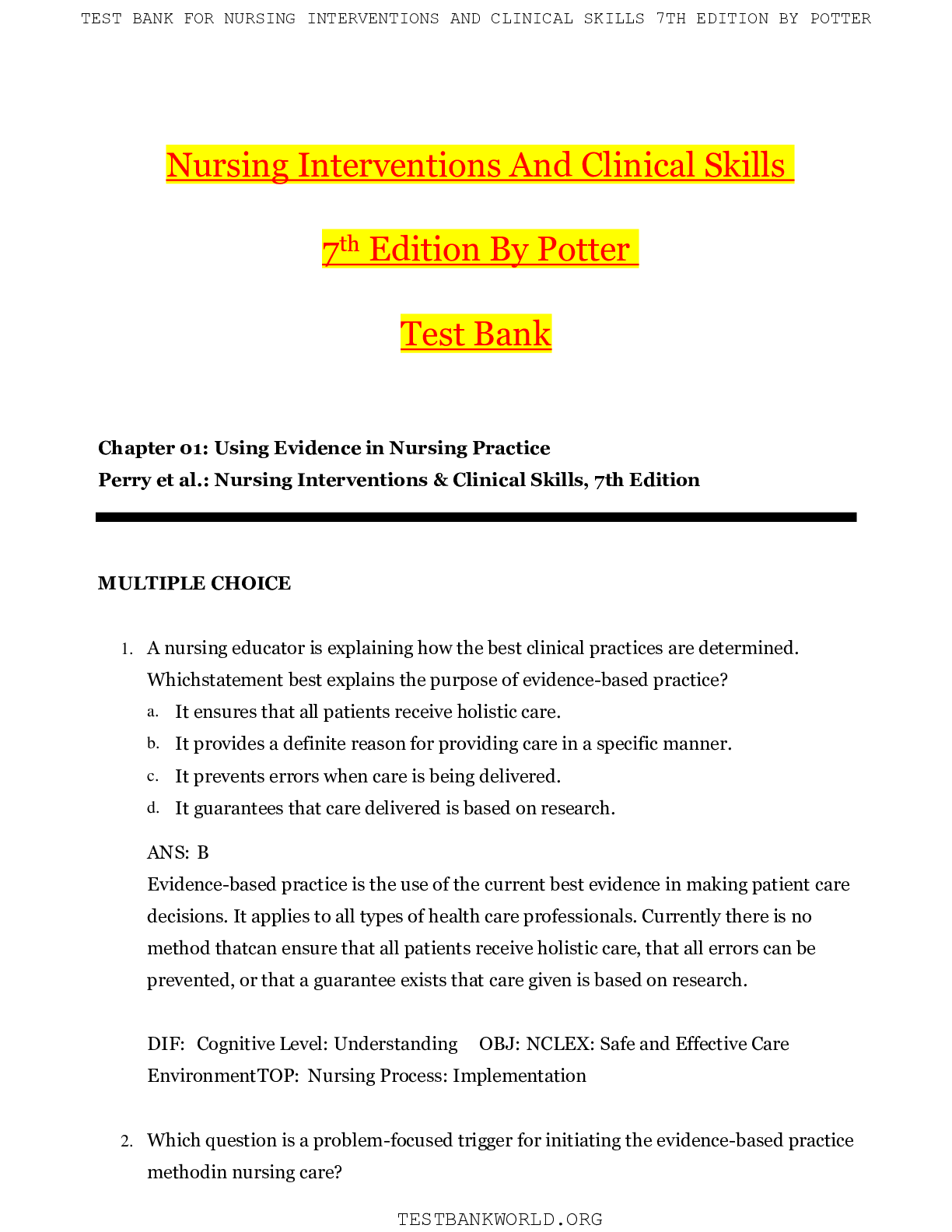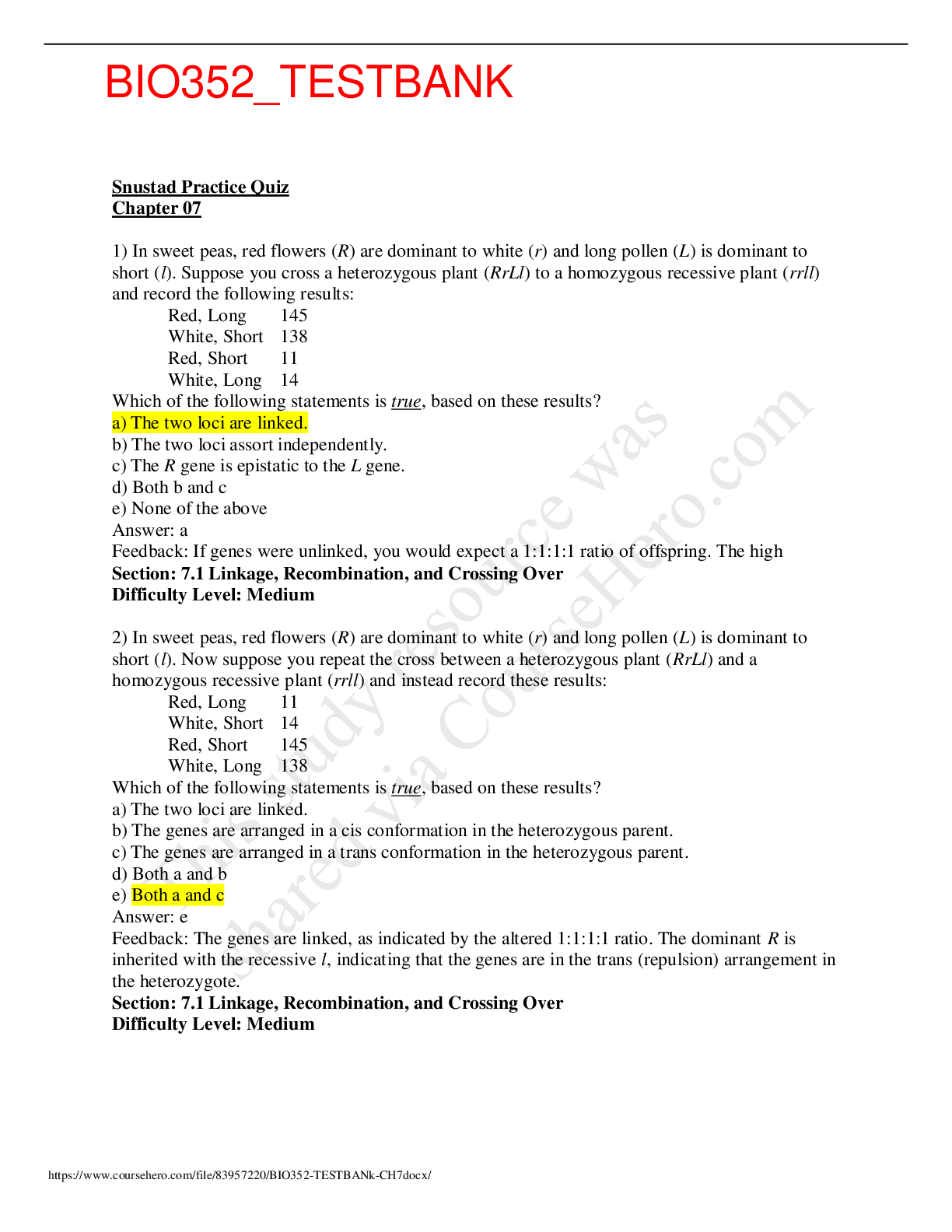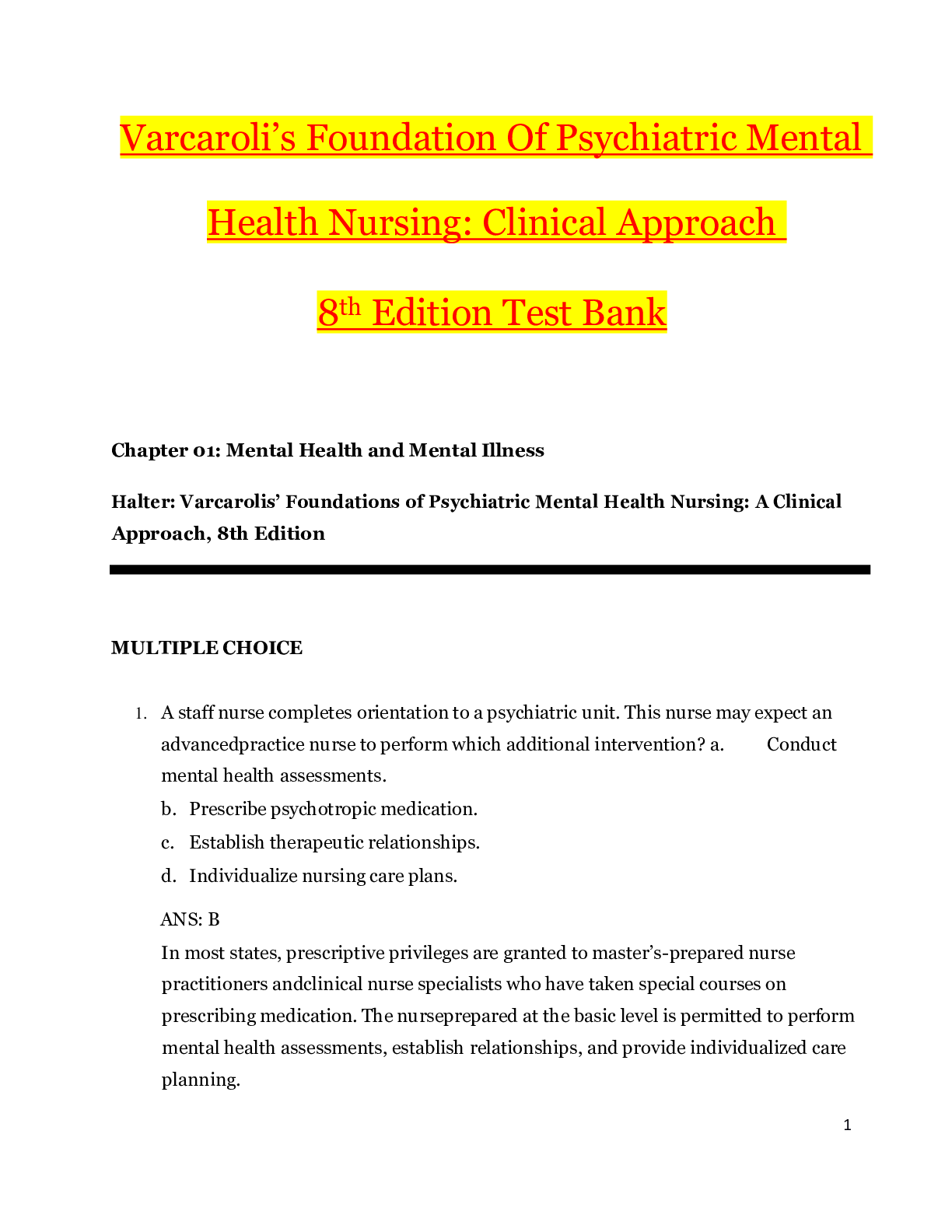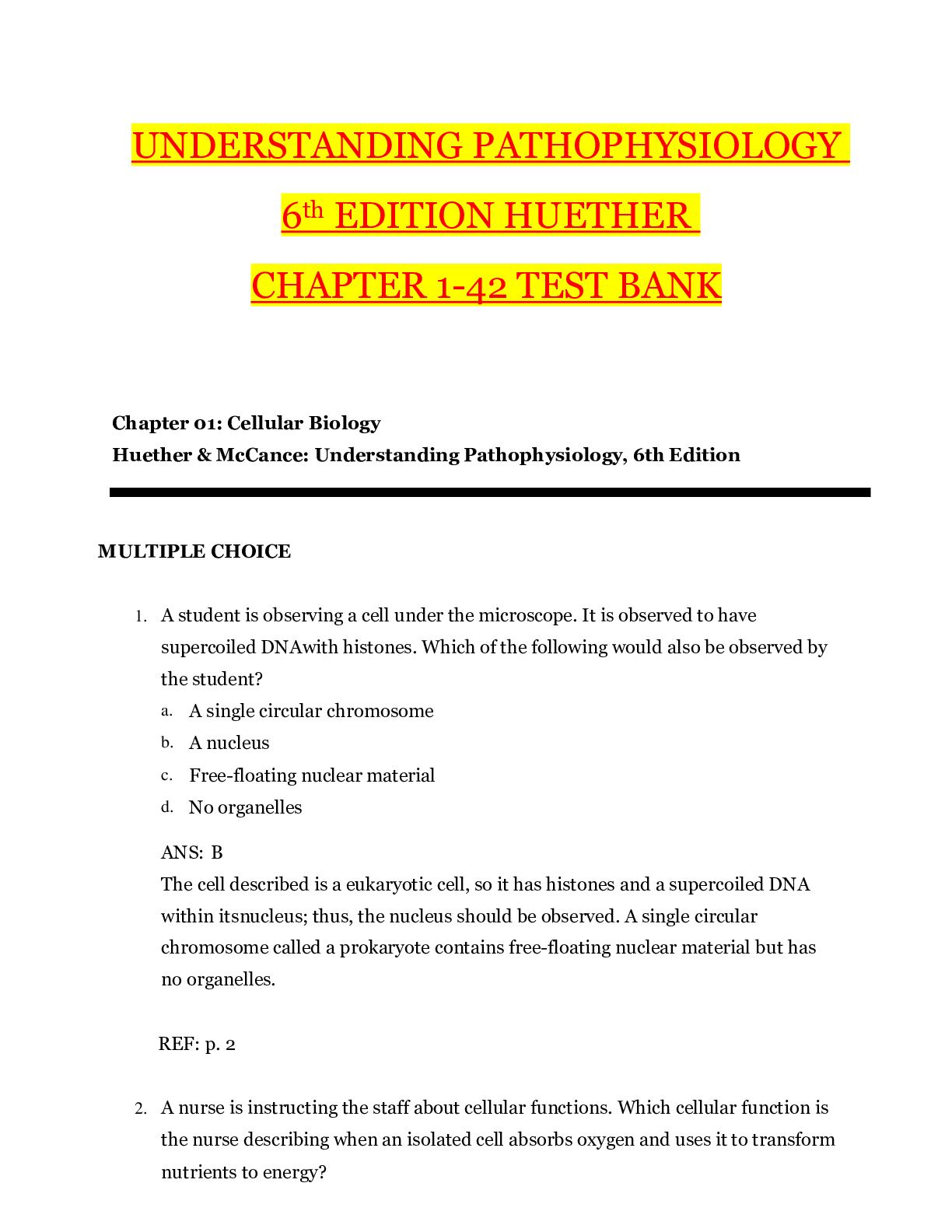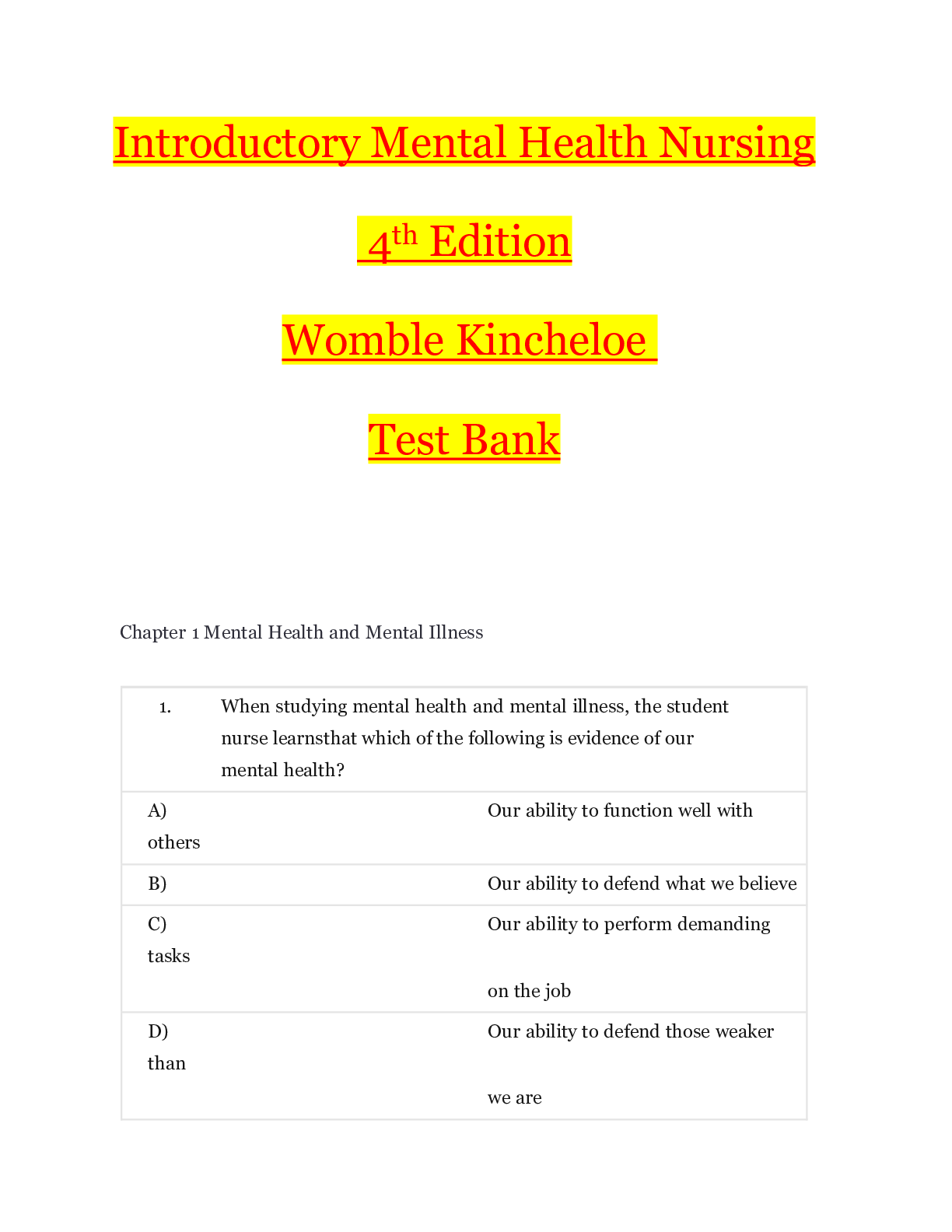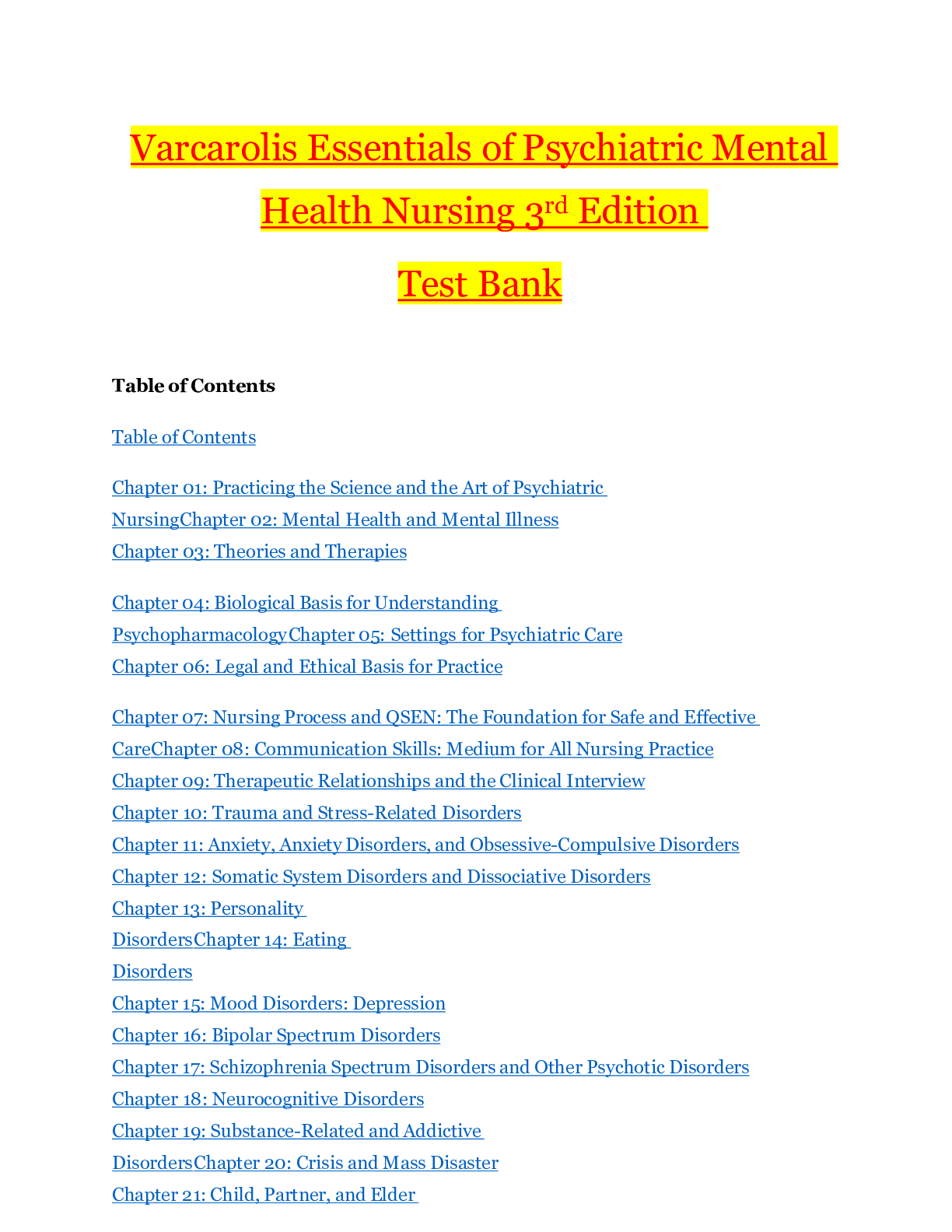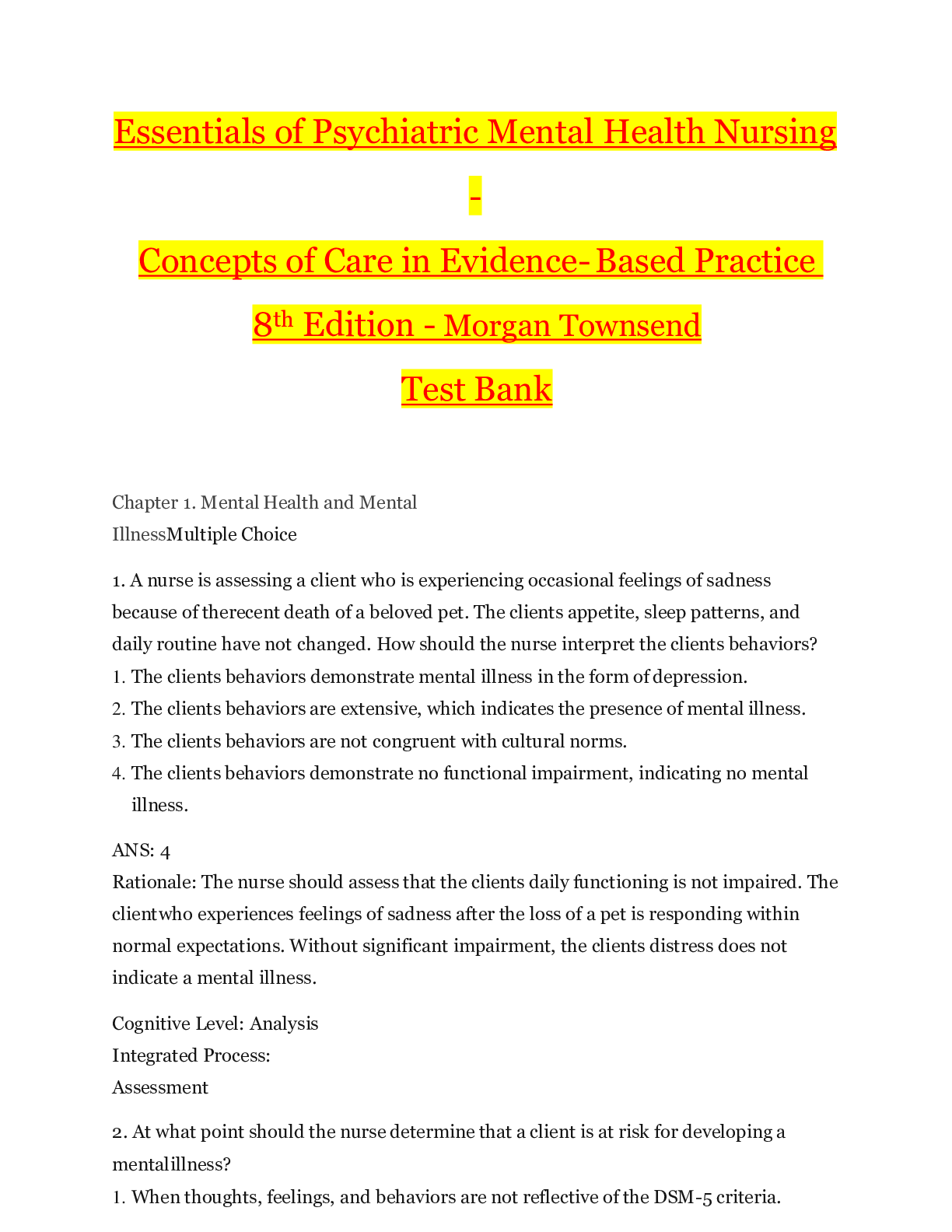Biology > TEST BANK > BIO352_TESTBANK | Snustad Practice Quiz | ANSWERS CORRECTLY HIGHLIGHTED, Graded A+ (All)
BIO352_TESTBANK | Snustad Practice Quiz | ANSWERS CORRECTLY HIGHLIGHTED, Graded A+
Document Content and Description Below
Snustad Practice Quiz Chapter 06 1) The analysis of stained chromosomes is the major activity in the biological discipline known as: a) genetics b) molecular genetics c) cytogenetics d) karyoty... ping e) none of these 2) Human cells contain how many chromatids at the end of S phase? a) 23 b) 46 c) 48 d) 92 e) none of these 3) Which of the following chromosomal combinations could be classified as polyploidy? a) A B C b) A BB CC c) AA BB CCC d) AAA BBB CCC e) none of the above 4) Many polyploidy species are inviable due to irregular segregation patterns during meiosis. In a triploid organism, which formation is most likely to lead to all three chromosomes being segregated to the same gamete during anaphase I of meiosis? a) univalent b) bivalent c) trivalent d) all of the above can result in abnormal chromosome segregation patterns e) none of the above – chromosomes will always segregate normally during meiosis I. 5) Which of the following terms describes a method by which polyploidy plants produce unreduced eggs, allowing the plants to reproduce asexually? a) disequilibrium b) lysogenic c) dysgenesis d) apomixis e) none of the above 6) Triticum aestivum, or bread wheat, contains three different chromosome sets of seven chromosomes each. Why is this polyploid organism so successful, while others are plagued with severe infertility issues? a) Triticum is hexaploid. b) Triticum is allopolyploid. c) Triticum is autopolyploid. d) Both a and b e) Both a and c 7) Chromosomes that are duplicated without separation of sister chromatids are called: a) polytene b) centromeres c) allopolyploids d) chromocenters e) none of these 8) Which of the following statements about polytene chromosomes is not true? a) The chromocenter is composed of heterochromatin and therefore is underreplicated. b) Homologous polytene chromosomes pair, just as chromosomes do during meiosis. c) The polytene chromosomes are found in tissues that become polyploidy during development. d) Only certain chromosomes are overreplicated and polyploid, but not every chromosome. e) Differential coiling along the length of the chromatin fiber bundle causes variation in the density of the chromatin 9) is the process of chromosome duplication, followed by separation of the resulting sister chromatids. a) mitosis b) meiosis c) endomitosis d) endomeiosis e) aneuploidy 10) Aneuploidy describes a numerical change in part of the genome, usually regarding the dosage of a single chromosome. If a chromosome or segment is overrepresented, it is called a) hypoploid. b) alloploid. c) polyploid. d) hyperploid. e) autoploid. 11) can occur in either the first or second meiotic division to produce abnormal gametes. a) translocations b) inversions c) nondisjunction d) insertions e) none of these 12) Which of the following does not correctly pair the syndrome with the correct karyotype? a) Turner Syndrome, 45, X. b) Klinefelter Syndrome, 47, XXY. c) Down Syndrome, 47, +21. d) Patau Syndrome, 45, -13 e) Edward Syndrome, 47, +18 13) In Drosophila, flies with both male and female structures: a) are gynadromorphs b) are not genetic mosaics c) have only one cell type d) are not sexually mature e) all of these f) none of these 14) The cri-du-chat syndrome in humans is an example of a) an insertion b) a deletion c) a duplication d) a monosomy e) a trisomy 15) The process where the fluid that surrounds the developing fetus is cytologically examined is called a) amniocentesis b) chorionic villus biopsy c) fetal cytology d) hematology e) ultrasound 16) The process where the tissue from the placenta is collected and karyotyped to determine if the developing fetus is cytologically normal is called a) amniocentesis b) chorionic villus biopsy c) fetal cytology d) hematology e) ultrasound 17) A inversion is when the centromere is included in the inversion of the chromosome segment. a) paracentric b) unicentric c) chromocentric d) pericentric e) translocation 18) A reciprocal translocation is when: a) homologous chromosomes exchange pieces with no net loss of genetic material b) nonhomologous chromosomes exchange pieces with a net loss of genetic materials c) homologous chromosomes exchange pieces with a net loss of genetic material d) nonhomologous chromosomes exchange pieces with no net loss of genetic materials e) none of these 19) A chromosome with two equivalent arms is called: a) heterochromosome b) hypochromosome c) isochromosome d) hyperchromosome e) none of these 20) When nonhomologous chromosomes fuse at their centromeres, we call this structure: a) a Robertsonian translocation b) a reciprocal translocation c) an isochromosome d) a chromocenter e) a polytene chromosome [Show More]
Last updated: 1 year ago
Preview 1 out of 7 pages
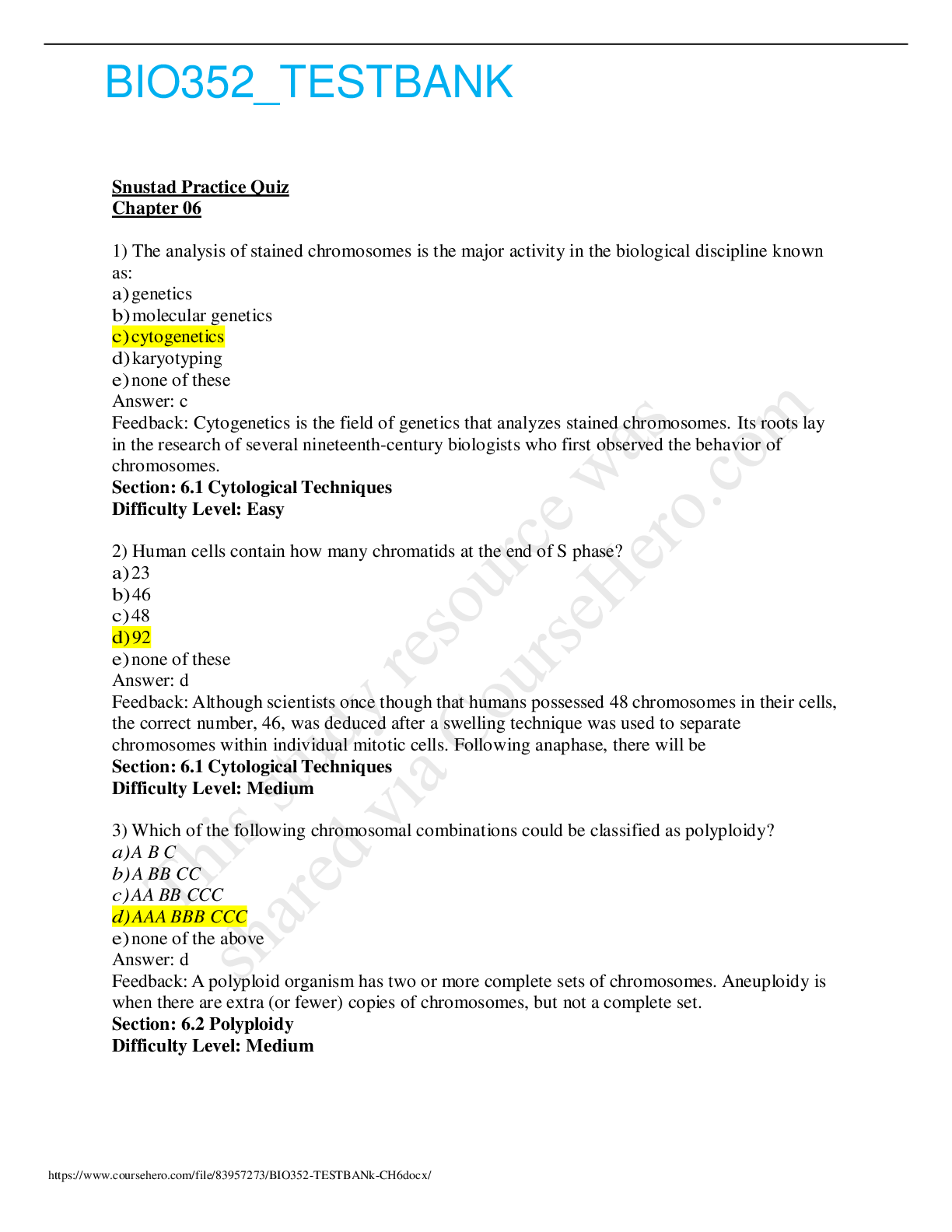
Reviews( 0 )
Document information
Connected school, study & course
About the document
Uploaded On
Mar 13, 2021
Number of pages
7
Written in
Additional information
This document has been written for:
Uploaded
Mar 13, 2021
Downloads
0
Views
52

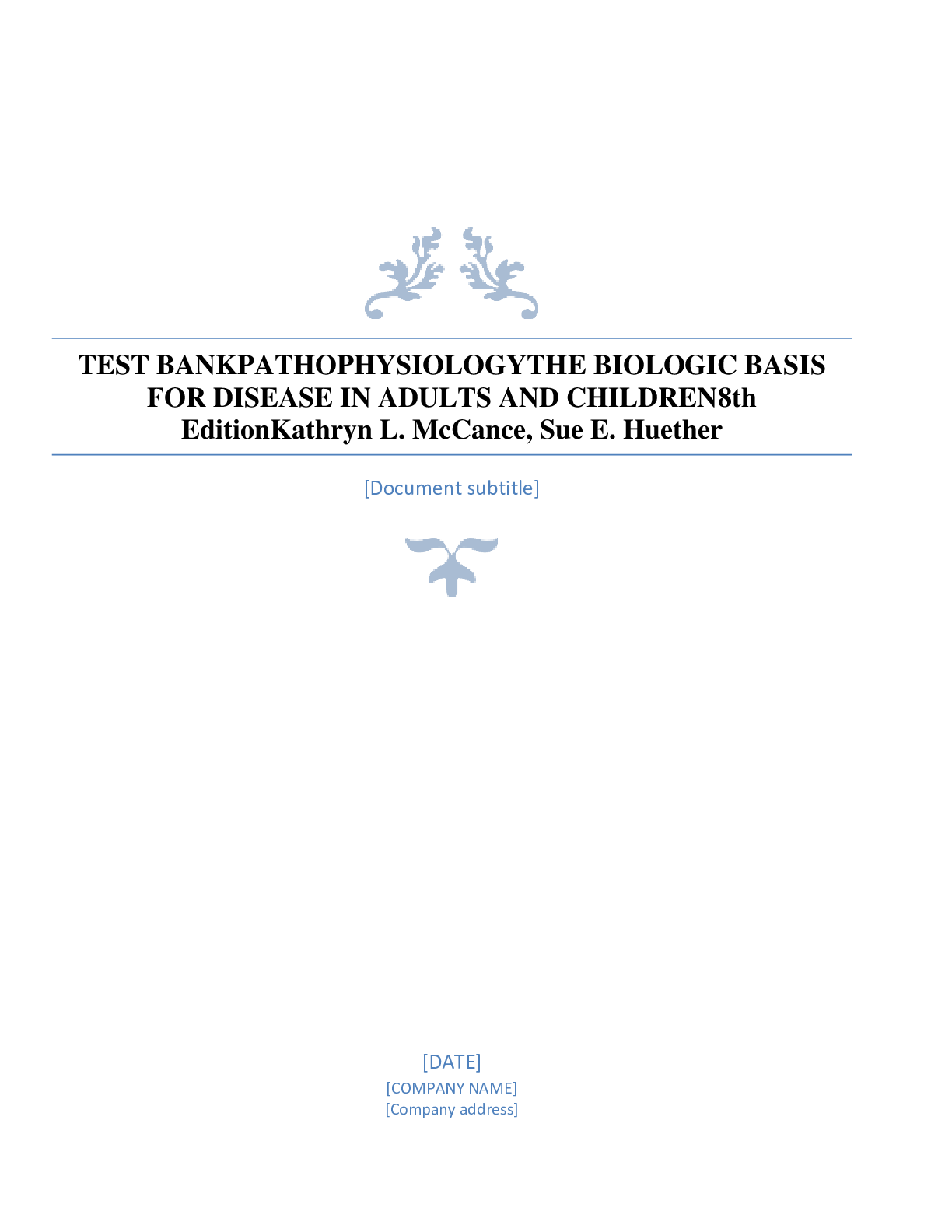


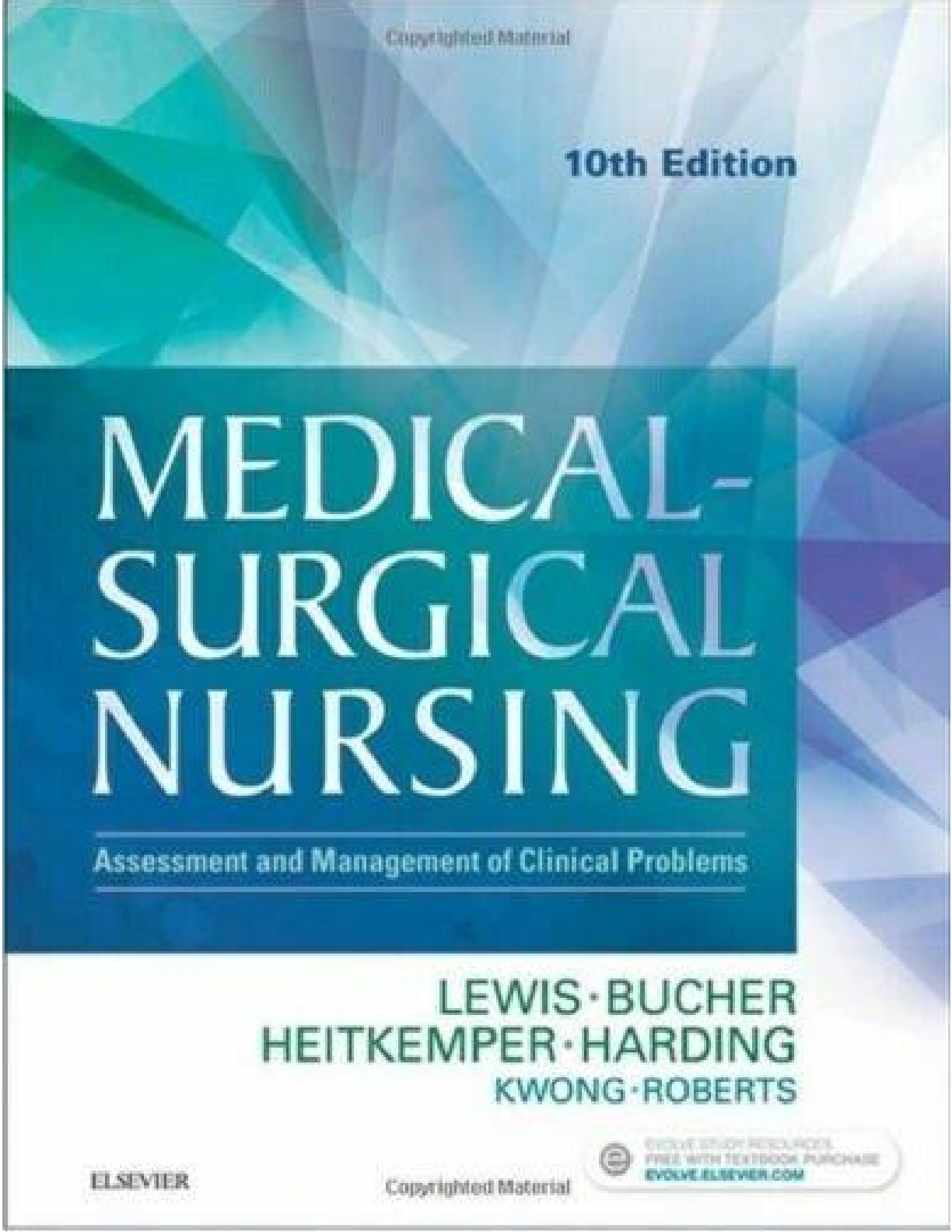
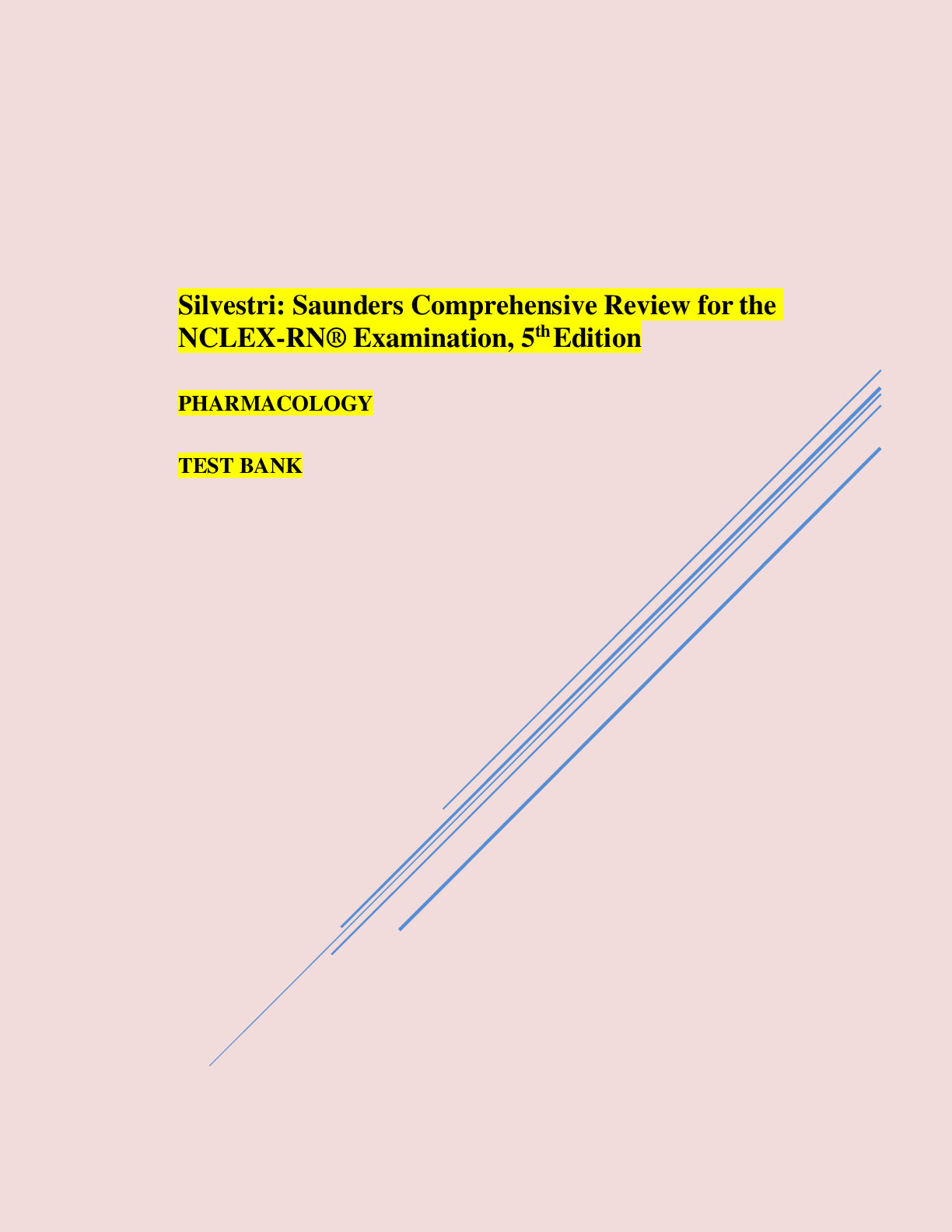

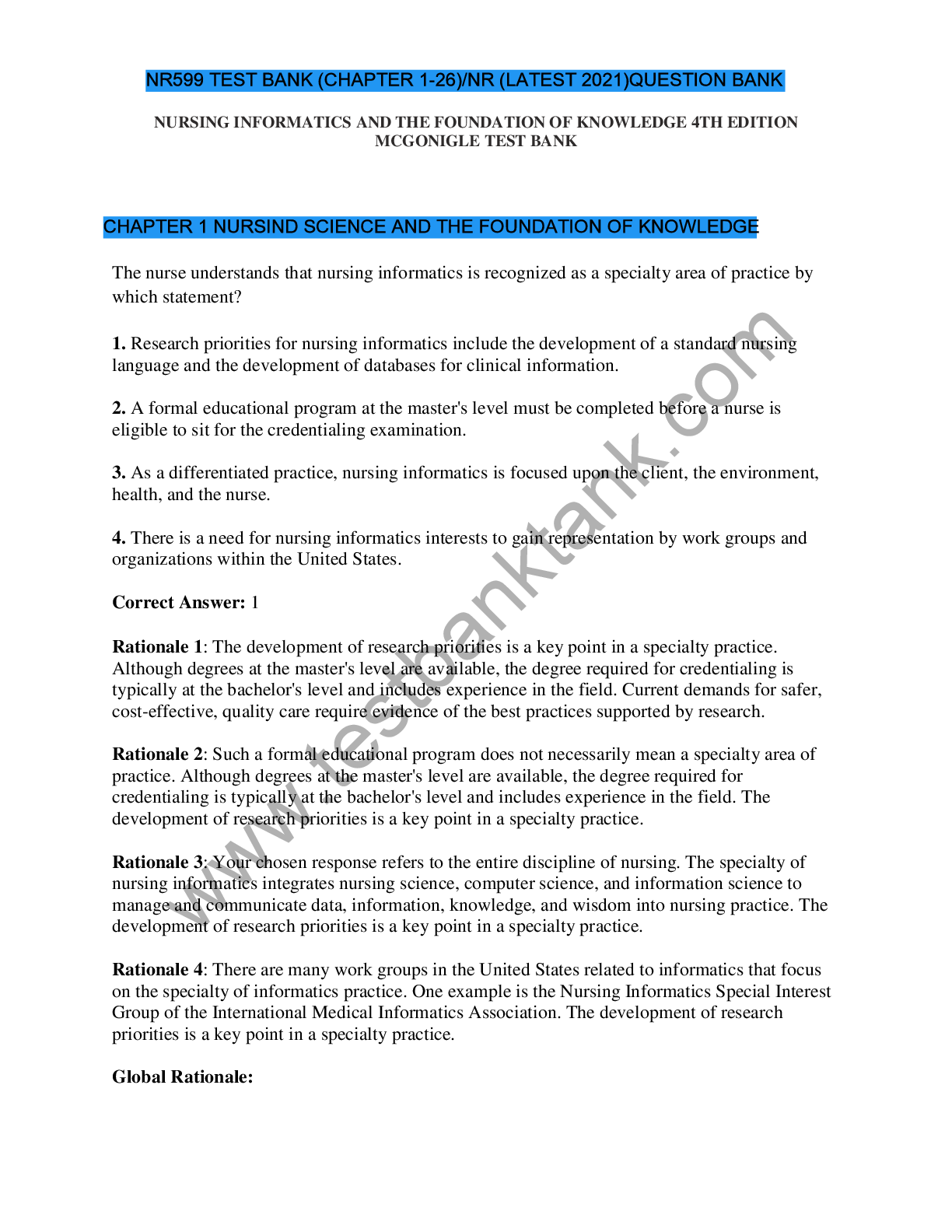
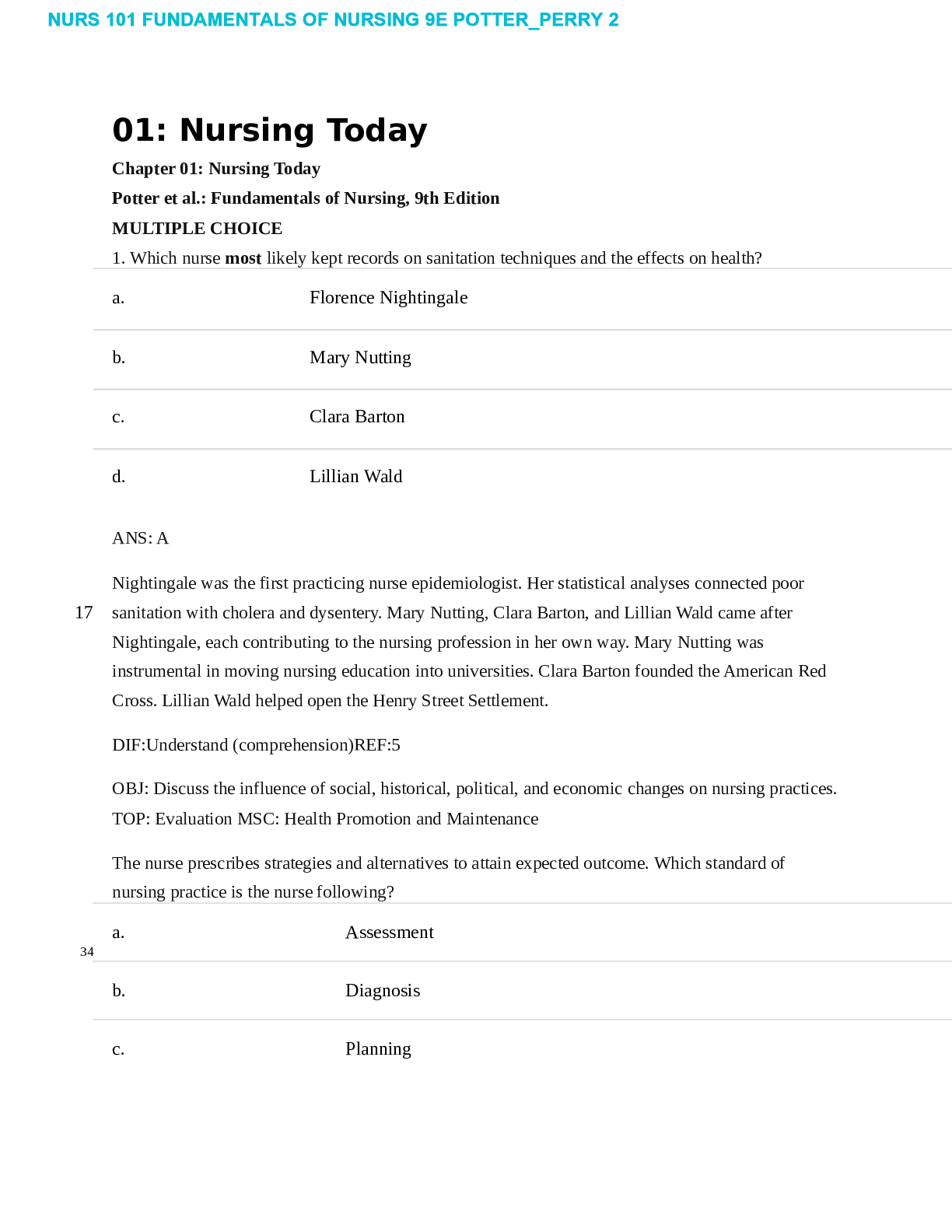

.png)
